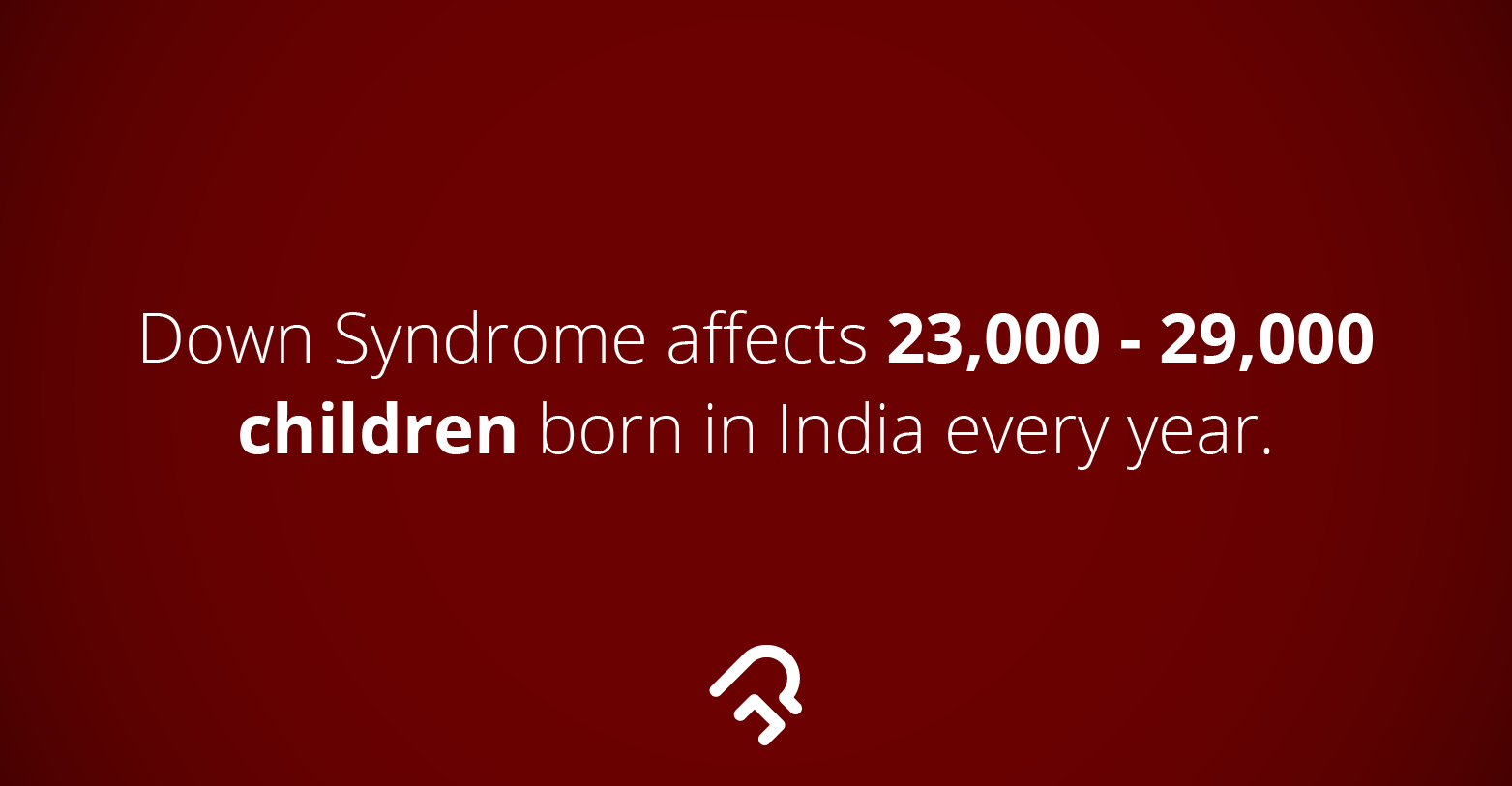State Of Down Syndrome In India: Facts & Figures
By Dr. Nikita Toshi +2 more

Get,

to manage your symptom
Get your,


4 Cr+ families
benefitted

OTP sent to 9988776655



You’ve successfully subscribed to receive
doctor-approved tips on
Whatsapp

Get ready to feel your best.

Hi There,
Download the PharmEasy App now!!


Register to Avail the Offer
Send OTPBy continuing, you agree with our Privacy Policy and Terms and Conditions

Hi There,
Sign up on PharmEasy now!!
Trusted by 4 crore+ families

OTP sent to 9988776655



You have unlocked 25% off on medicines




Code: NU25
By Dr. Nikita Toshi +2 more
Down Syndrome affects approximately 23,000-29,000 children born in India every year. Though the numbers are alarming, there is very little open dialogue on this topic in India. Though it is not fatal in developed countries but in India it continues to be fatal. This is mostly because of the low awareness levels and outdated medical facilities.
Table of Contents
It is a congenital disease arising due to a defect in chromosomes, which results in intellectual impairment and physical abnormalities. This is a gene defect at birth or before birth and is a lifelong condition. Normally a person has 46 chromosomes but a person suffering from this condition has 47 chromosomes and having an extra chromosome disrupts the way the body and mind function. Kids suffering from this genetic disease are at a greater risk of childhood leukaemia, heart defects and immune and endocrine system dysfunction.

People suffering from Down Syndrome usually have flat faces, upward slant eyes, a short neck, a single deep crease across the palm of their hand, small stature and low muscle tone. They may or may not possess all of these characteristics. It was in the late nineteenth century when Langford Down who is also known as the ”father” of the syndrome published an accurate description of a person suffering from this condition.
Did you know?
Scientists have identified three different types of Down Syndromes:
Down syndrome cannot be prevented, but good antenatal care and early detection and regular checkups with pediatrician will improve the quality of life of these children. Regular hearing screening is a must in Downs syndrome children.
Dr. M.G. Kartheeka, MBBS, MD(Pediatrics)
Communication and developmental delays are commonly encountered in people with Down’s syndrome. Even though it is a lifelong condition, people with this syndrome can live an active, healthy life with support from friends and family.
Dr. Ashish Bajaj, M.B.B.S., M.D in Clinical Pharmacology and Toxicology
Down Syndrome in India: India has the highest number of people suffering from Down’s Syndrome in the world. The numbers are alarming but what is more frightening is the fact that this condition is fatal in India due to negligence, lack of awareness and obsolete medical and technological facilities. This congenital condition often comes with congenital heart diseases which can be treated. However, a vast majority of Indian doctors advise against surgery for infants whose body weight is less than 10KG because they are of the opinion that such kids have a slim or poor chance of survival. This leads to further complications like pulmonary hypertension, which can lead to a child’s death. Out of the 23,000 to 29,000 kids born with Down Syndrome in India every year, the survival rate is only 44%. Improved life expectancy in rich nations has been mainly attributed to early surgical intervention and better medical care.
There are a handful of organizations that are dedicated to helping and supporting individuals suffering from this congenital condition, to name a few: Down Syndrome Federation of India, co-founded by Dr Rekha Ramachandran offers daycare services to individuals with special needs. This organization was established in the year 1984 and today they provide services not just to kids in India but also operates in the Middle East. They also hold annual awards Another organization working for the same cause, the Down Syndrome Care Association, registered by the Govt. of Maharashtra, started in the year 2006 caters to people suffering from this medical condition.
As a society, we need to increasingly work towards spreading education, knowledge and acceptance of Down Syndrome and the diseases that come with this condition.
Disclaimer: The information provided here is for educational/awareness purposes only and is not intended to be a substitute for medical treatment by a healthcare professional and should not be relied upon to diagnose or treat any medical condition. The reader should consult a registered medical practitioner to determine the appropriateness of the information and before consuming any medication. PharmEasy does not provide any guarantee or warranty (express or implied) regarding the accuracy, adequacy, completeness, legality, reliability or usefulness of the information; and disclaims any liability arising thereof.
Links and product recommendations in the information provided here are advertisements of third-party products available on the website. PharmEasy does not make any representation on the accuracy or suitability of such products/services. Advertisements do not influence the editorial decisions or content. The information in this blog is subject to change without notice. The authors and administrators reserve the right to modify, add, or remove content without notification. It is your responsibility to review this disclaimer regularly for any changes.
Comments